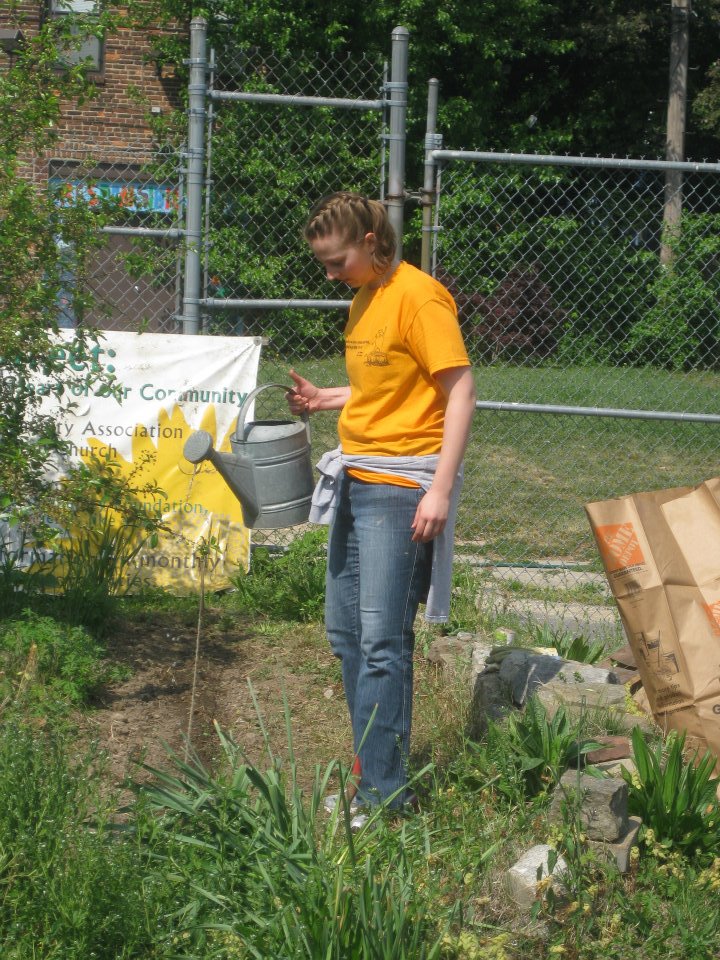Guest blog post from Marian Dickinson, a participant in our Breakthrough Leaders Program for Sustainable Food Systems. She is a graduate student at the Johns Hopkins School of Public Health.
What about our food systems do you want to change?
My passion for food systems is related to the impact it has on individual and community health. Since I was a child I have always wanted to be in a helping profession. I have felt called to use my skills and abilities to improve the lives of others. Our food system impacts everyone, and increasingly, to a negative result. I envision a food system that instead of making us sick makes us well and promotes the health of individuals, communities, and the environment.
How did you come to be in the role you are currently in? What was your journey?
I was fortunate enough to grow up on a dairy farm in western Ohio, although I never would have admitted that at the time. This has given me an appreciation for the hard work and dedication it takes to be a successful farmer. My cousin Debra Eschmeyer also grew up on a dairy farm a couple of miles away and has made her mark on food systems with the founding of Food Corps and managing her own organic farm with her husband. She and I both left the farm to go to college and start careers but have found ourselves coming back to our roots through food. You can take the girl out of the farm, but I guess you can’t take the farm out of the girl!
After four years working in drug and alcohol abuse prevention, I decided to go back to school to study the rising preventative cause of death–obesity. I found myself more interested in news articles about health and wellness than drug and alcohol news. I was most interested in understanding how and why we make choices that will ultimately hurt us and damage our health, much like many people do with alcohol and other drugs. I found enormous satisfaction in working directly with youth, but I often felt frustrated that I could not do anything to change the real underlying causes of my students’ problems—poverty, broken homes, parental drug abuse, or discrimination. That is why I am now drawn to working at a systems level to work on the root of problems instead of just addressing the symptoms.
How do you effect food systems change in your current role?
My current task as a student is to learn, so I’m not effecting much change yet. For the next six months though I will be an intern with the Food Policy Director of Baltimore City. Under her watchful eye, I will contribute to the food system changes already started in Baltimore. Her goal is to increase city-wide access to healthy, affordable food and establish Baltimore as a leader in emerging sustainable food systems. Although the city of Baltimore has its challenges, it is also a city with innovative spirit and great potential. I intend to witness and contribute to initiatives that will establish long-term solutions to food access.
What are you most looking forward to about the Breakthrough Leaders Program?
I am most looking forward to meeting others who are passionate about the same issues as I am. My current learning experiences have been largely academic, and I am eager to learn from others how they are approaching this problem by other avenues.
What was your most memorable meal to date? Why?
I have been fortunate to eat many delicious meals made by the hands of talented chefs in restaurants, the homes of friends and family, and at my own wedding. But the most memorable meal for me will likely be the 2006 Thanksgiving dinner. I was living in Northern Ireland and the community I lived with was gracious enough to set aside time for my fellow North Americans and I to cook and share a Thanksgiving meal with them. Despite the holiday being meaningless there, they understood the spirit of the day (and the miracle that is pumpkin pie) and celebrated with us the true meaning of Thanksgiving. To me a meal is more than great food.
What is your favorite food? Why?
While my friends and family might guess dark chocolate, they would be wrong. I would have to say that my favorite food is homemade bread, preferably warm and with butter. Aside from the delicious taste, there is something about knowing the hours of effort that goes into homemade bread that makes the taste even better.














